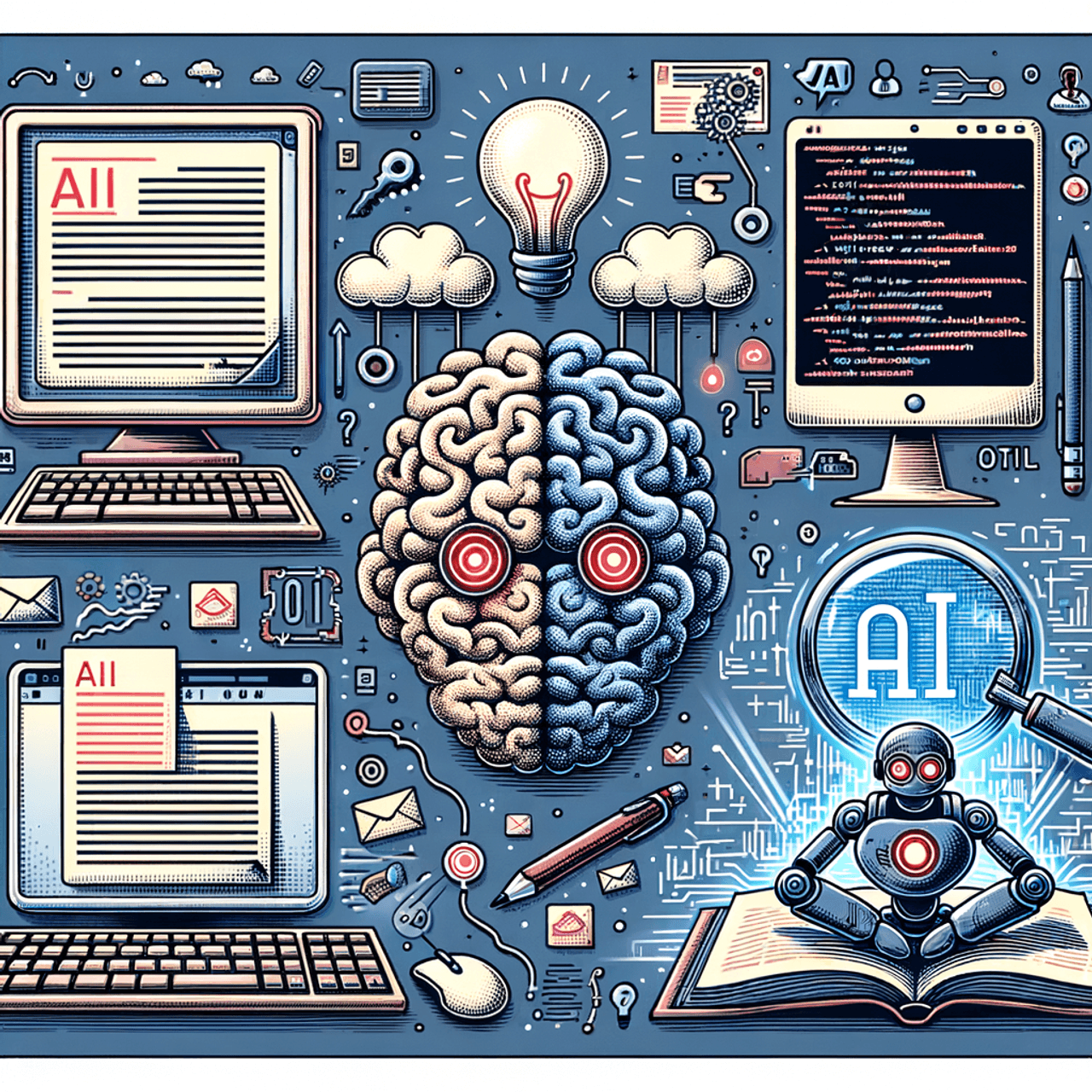by ContentERP | Oct 13, 2024 | Uncategorized
How to Use Keyword Research Tools to Improve SEO
An old saying goes, “You can lead a horse to water, but you can’t make it drink.” In the digital world, the water is your website content, and the horse represents your audience. While great content is essential, it won’t matter if your audience can’t find it. This is where keyword research comes into play—it’s like placing signposts along a winding trail, guiding thirsty horses straight to your water source. But to craft those signposts effectively, you need the right tools and strategies.
Keyword research is more than just finding popular words and phrases; it’s about understanding your audience’s language and aligning your content with their needs. When done correctly, it is the cornerstone of effective search engine optimization (SEO), helping you attract the right traffic and, ultimately, drive more conversions. In this article, we’ll explore how to use keyword research tools to improve your SEO strategy, with insights and practical tips for getting the most out of your efforts.

1. The Importance of Keyword Research in SEO: The Compass to Guide Your Strategy
Think of keyword research as a compass for your SEO strategy. As a sailor wouldn’t venture into uncharted waters without navigation tools, no content creator should embark on SEO without thorough keyword research. It’s the process of discovering the terms and phrases people use when searching for information online, and it’s critical for several reasons:
Why It Matters:
-
Targeted Traffic: By understanding what your audience is searching for, you can create content that directly addresses their queries, attracting more relevant visitors to your site.
-
Improved Visibility: Using the right keywords helps your content appear in search engine results pages (SERPs), making it easier for potential customers to find you.
-
Content Strategy Foundation: Keywords inform the topics you cover, ensuring your content is both engaging and valuable.
2. Getting Started: Tools to Navigate the Keyword Research Landscape
Before diving into the depths of keyword research, it’s essential to have the right tools in your toolkit. There are several powerful options available, each offering unique insights into keyword performance, competition, and search trends. Let’s take a closer look at some of the best tools:
Content ERP: Your All-in-One SEO Companion
Content ERP is more than just a content management platform—it’s a comprehensive SEO tool that simplifies keyword research, content creation, and performance tracking. With its intuitive interface, you can easily identify high-performing keywords, track your rankings, and refine your strategy over time.
How to Use It:
-
Keyword Discovery: Use the keyword research feature to find relevant keywords based on your niche. Content ERP’s AI-driven suggestions help you uncover opportunities you might otherwise miss.
-
Content Optimization: Leverage the on-page SEO recommendations to optimize your content for the selected keywords, ensuring it ranks higher on SERPs.
Ahrefs Keyword Generator: The Data-Driven Powerhouse
Ahrefs is renowned for its robust keyword research capabilities. The Ahrefs Keyword Generator provides an in-depth analysis of keyword difficulty, search volume, and click-through rates, making it easier to prioritize which keywords to target.
How to Use It:
-
Keyword Difficulty Analysis: Use Ahrefs to identify keywords that are within your reach. Focus on terms with moderate difficulty and high search volume to maximize your chances of ranking.
-
Competitor Research: Enter your competitor’s URL to discover which keywords they’re ranking for. This can help you identify content gaps and opportunities to outperform them.
Google Analytics: The Insightful Oracle
While not a keyword research tool per se, Google Analytics offers invaluable insights into how your existing content is performing. By analyzing metrics like bounce rate, session duration, and page views, you can identify which keywords are driving traffic and where there’s room for improvement.
How to Use It:
-
Audience Insights: Analyze the keywords your visitors are using to find your site. This data helps you understand what resonates with your audience and where to focus your efforts.
-
Content Performance: Use the behavior reports to see which pages are performing well and which need optimization. Adjust your content strategy based on these insights.
3. Crafting Your Keyword Strategy: The Blueprint for Success
Once you’ve gathered data from your keyword research tools, it’s time to craft a strategy that aligns with your business goals. This involves selecting the right keywords, organizing them into clusters, and creating content that not only targets those keywords but also provides genuine value to your audience.
Select Your Keywords Wisely: Balancing Competition and Relevance
Choosing the right keywords is like picking fruit from a tree. You want the ripest, juiciest ones—those with high search volume and low competition. However, it’s not just about choosing the most popular terms; you need to find keywords that are relevant to your business and audience.
Tips for Choosing Keywords:
-
Focus on Long-Tail Keywords: These are more specific phrases, often containing three or more words, like “best keyword research tools for small businesses.” They may have a lower search volume but are easier to rank for and attract more qualified traffic.
-
Check Search Intent: Make sure the keywords you choose align with the intent behind your content. Are users looking for information, making a purchase decision, or seeking a solution to a problem? Tailor your content to match these intentions.
Organize Keywords into Clusters: The Content Map
Think of your keywords as puzzle pieces. To create a clear picture, you need to group related keywords. This is known as keyword clustering and helps you structure your content in a way that improves SEO and user experience.
How to Do It:
-
Create Topic Clusters: Group keywords into themes or topics. For example, if your focus is on “SEO tools,” you might have clusters for “best SEO tools,” “free SEO tools,” and “how to choose SEO tools.”
-
Plan Content Around Clusters: For each cluster, create a pillar page that covers the main topic comprehensively, supported by sub-pages that delve into related subtopics. This approach not only improves internal linking but also establishes your site as an authority on the topic.
4. Creating SEO-Optimized Content: Turning Keywords into Compelling Narratives
Keywords are the seeds of your content, but it’s your job to nurture them into flourishing narratives. Creating SEO-optimized content is about more than just sprinkling keywords throughout an article—it’s about crafting engaging, valuable content that resonates with your audience.
Incorporate Keywords Naturally: The Art of Seamless Integration
Using keywords effectively is like seasoning a dish—you want to enhance the flavor without overwhelming the palate. The same goes for content: keywords should fit naturally into the flow of your text.
Tips for Natural Integration:
-
Use Keywords in Key Places: Include your primary keyword in the title, first paragraph, headers, and meta description. Use secondary keywords throughout the body text.
-
Avoid Keyword Stuffing: Don’t force keywords where they don’t belong. This not only disrupts the readability of your content but can also result in search engine penalties.
-
Vary Your Language: Use synonyms and related terms to maintain a natural flow and avoid repetition. For example, if your primary keyword is “keyword research,” you could also use phrases like “finding keywords” or “keyword analysis.”
Create High-Quality, Engaging Content: The Heart of SEO
Great SEO content is like a good book—it keeps readers engaged from start to finish. While keywords help search engines find your content, it’s the quality and relevance of that content that keep readers on the page.
Content Creation Tips:
-
Focus on User Experience: Ensure your content is easy to read, visually appealing, and accessible. Use headers, bullet points, and images to break up text and improve readability.
-
Provide Value: Address your audience’s needs, answer their questions, and offer actionable insights. The more value you provide, the more likely readers are to share your content and return to your site.
-
Tell a Story: People remember stories, not statistics. Weave narratives into your content to illustrate points and make your message more relatable and memorable.
5. Measuring and Refining Your Strategy: The Continuous Journey of SEO Improvement
SEO is not a one-and-done task—it’s an ongoing process of refinement and adaptation. After implementing your keyword strategy and creating content, it’s crucial to measure its performance and adjust your approach as needed.

Use Analytics to Track Success: The Feedback Loop
Analytics are your compass in the ever-changing landscape of SEO. By monitoring key metrics, you can see what’s working, what’s not, and where there’s room for improvement.
Key Metrics to Monitor:
-
Organic Traffic: The number of visitors coming to your site from search engines. Increasing organic traffic is a good indicator that your SEO strategy is working.
-
Bounce Rate: The percentage of visitors who leave your site after viewing only one page. A high bounce rate may indicate that your content isn’t meeting user expectations.
-
Conversion Rate: The percentage of visitors who complete a desired action, such as signing up for a newsletter or making a purchase. This metric helps you gauge the effectiveness of your content in driving business goals.
Refine Your Strategy: The Art of Adaptation
SEO is a dynamic field, with search engine algorithms and user behaviors constantly evolving. Regularly revisiting your keyword strategy and content performance is essential to stay ahead of the curve.
Tips for Refinement:
-
Update Old Content: Refreshing outdated content with new information and optimized keywords can significantly boost its performance.
-
Experiment with New Keywords: Use tools like the Ahrefs Keyword Generator to explore new keyword opportunities and expand your content reach.
-
Test and Learn: SEO is as much about experimentation as it is about strategy. Try different approaches, and track the results.
by ContentERP | Oct 13, 2024 | Uncategorized
Top Tips for Publishing SEO-Optimized Content on Schedule

In a small Italian village perched on a hillside, there once lived a clockmaker named Enzo. His craft was renowned far and wide, not just because his clocks were beautifully intricate, but because they were uncannily precise. Every chime, every tick, every tock was a testament to his meticulous attention to detail and unwavering commitment to punctuality. It is said that Enzo could set his clocks to match the sunrise and sunset with a precision so exact, it seemed as if he had time itself dancing to his tune.
For content creators and digital marketers today, the challenge is not unlike Enzo’s: to craft each piece with precision, ensuring it is delivered exactly on schedule, and that it resonates perfectly with the intended audience. But in the bustling, fast-paced world of digital marketing, the clock never stops ticking, and delivering SEO-optimized content on time can feel like chasing after a runaway train.
Yet, just as Enzo mastered the art of timekeeping, so too can you master the art of publishing SEO-optimized content on schedule. It requires a blend of strategy, discipline, and the right tools—tools like ContentERP that help keep the gears of your content engine well-oiled and running smoothly. In this article, we’ll explore top tips to help you stay on track, craft compelling SEO content, and keep your readers—and the search engines—coming back for more.
1. Plan Ahead: The Content Calendar is Your Blueprint
Like a master architect, your first step in creating a beautiful, functioning structure is drafting a blueprint. In the world of content, this blueprint is your content calendar. It’s the cornerstone of successful content creation and publishing, offering a bird’s-eye view of your content strategy for weeks or even months ahead.

Why It Matters: A well-organized content calendar helps you visualize your upcoming content pieces, align them with important dates (like product launches or seasonal trends), and ensure that you’re not scrambling to come up with ideas at the last minute. This foresight allows for more thoughtful, strategic content planning.
How to Do It: Utilize tools like ContentERP to create a dynamic content calendar. Assign topics, set deadlines, and track the progress of each piece of content. Remember to include buffer time for revisions and unexpected delays. A good rule of thumb is to schedule high-priority content a week or two in advance, leaving room for spontaneity and trend-responsive posts.
2. Keyword Research: The North Star of SEO Content Writing
Imagine setting sail without a compass—terrifying, right? Similarly, creating content without proper keyword research is like navigating the digital seas without direction. Keywords are the foundation of search engine optimization; they are the signals that guide search engines to your content.

Why It Matters: Effective keyword research ensures that your content is aligned with what your audience is searching for. It helps you understand the language they use, the questions they’re asking, and the problems they’re looking to solve. This is crucial for attracting organic traffic and establishing your authority in your niche.
How to Do It: Use SEO tools like Google Keyword Planner, Ahrefs, or the integrated SEO tool in ContentERP. Start by identifying a broad topic relevant to your niche, then narrow it down using long-tail keywords—these are often less competitive and more specific. For example, instead of targeting “SEO tools,” aim for “best SEO tools for small businesses.” This focus will help your content stand out in a crowded digital landscape.
3. Create Content Briefs: The Recipe for Success
Imagine trying to bake a complex dessert without a recipe—what you’d get is a kitchen disaster rather than a culinary masterpiece. Similarly, jumping into content creation without a clear brief can lead to disorganized, unfocused articles that fail to meet your goals.
Why It Matters: A content brief is a detailed outline that guides the writer on the scope, structure, and style of the article. It should include the target keyword, audience personas, key points to cover, and any specific calls to action. This ensures that everyone involved in the content creation process is on the same page and that the final product is cohesive and impactful.
How to Do It: Use ContentERP to create comprehensive content briefs. Include information on the target audience, the primary and secondary keywords, and the key messages you want to convey. If you’re working with a team, these briefs can be shared and edited collaboratively, ensuring everyone’s input is integrated into the final piece.
4. Optimize as You Write: Weaving SEO into the Fabric of Your Content
Think of SEO like the threads that weave through the fabric of your content. It shouldn’t be an afterthought or an add-on; rather, it should be part of the content creation process from the beginning. This means optimizing your content as you write, not after it’s completed.
Why It Matters: When SEO is integrated into the writing process, it creates content that is naturally optimized for search engines and readers alike. This includes using the primary keyword in strategic places, such as the title, headers, and throughout the body text, as well as optimizing meta descriptions and image alt text.
How to Do It: Tools like ContentERP’s SEO writing assistant can be invaluable here. As you write, it provides real-time feedback on keyword usage, readability, and SEO best practices, helping you fine-tune your content for maximum impact. Remember, good SEO content is not just about keyword stuffing; it’s about creating value for the reader while adhering to search engine guidelines.
5. Stick to a Publishing Schedule: Consistency is King
Consistency is the heartbeat of a successful content strategy. Imagine your favorite newspaper suddenly publishing sporadically—you’d quickly lose trust and interest. The same applies to your content. A predictable publishing schedule keeps your audience engaged and signals to search engines that your site is active and relevant.
Why It Matters: Regularly publishing high-quality content builds credibility with both your audience and search engines. It also helps you stay top-of-mind with readers, increasing the likelihood of them returning to your site.
How to Do It: Determine a realistic publishing schedule based on your resources and stick to it. Whether it’s once a week or three times a month, consistency is more important than frequency. Use scheduling features in ContentERP to automate the publishing process, ensuring that your content goes live exactly when you want it to.
6. Use Analytics to Refine Your Strategy: Learn, Adapt, Improve
Imagine planting a garden but never checking to see which plants are thriving and which are wilting. Without feedback, you’d never know what’s working. The same is true for your content strategy. Analytics provide the insights you need to refine your approach, ensuring your efforts are yielding the best possible results.
Why It Matters: Data-driven decision-making is the cornerstone of successful content marketing. By analyzing metrics such as page views, time on page, and conversion rates, you can identify what resonates with your audience and what falls flat.
How to Do It: Use analytics tools like Google Analytics or the built-in analytics dashboard in ContentERP to monitor your content performance. Pay attention to metrics like organic traffic, bounce rate, and engagement. Use this data to tweak your strategy, optimize underperforming content, and double down on what’s working.
7. Embrace Automation: Work Smarter, Not Harder
Automation is the secret weapon of modern marketers, akin to having a digital assistant that never sleeps. From scheduling social media posts to sending out email campaigns, automation tools can save you time and reduce the risk of human error.
Why It Matters: Automating repetitive tasks frees up your time to focus on higher-level strategy and creative work. It also ensures that your content is published and promoted consistently, even when you’re not at your desk.
How to Do It: Use tools like ContentERP to automate your content scheduling and distribution. You can set up workflows that automatically publish content, distribute it to social media channels, and even send it out in email newsletters. This not only keeps your content calendar on track but also ensures your audience is regularly engaged.
8. Maintain Quality Under Pressure: Prioritize Craft Over Quantity
In the race to publish content on schedule, it’s easy to prioritize speed over quality. But remember, publishing a high volume of mediocre content is like scattering seeds on barren soil—it might look busy, but it won’t yield results.
Why It Matters: Search engines and readers alike favor quality over quantity. Well-researched, well-written, and well-optimized content is far more likely to rank highly and attract loyal readers than a flood of subpar articles.
How to Do It: Set clear quality standards for your content, regardless of deadlines. This might mean fewer, but better, pieces. Use ContentERP to streamline the editing process and ensure that every piece of content meets your standards before it goes live. Remember, your brand’s reputation is on the line with every piece you publish.

Timing is Everything
Just like Enzo the clockmaker, your success in content creation depends on a delicate balance of precision, timing, and craftsmanship. By planning ahead, leveraging SEO tools, and maintaining a commitment to quality, you can publish SEO-optimized content that not only meets deadlines but exceeds expectations.
In the words of Benjamin Franklin, “By failing to prepare, you are preparing to fail.” Take the time to plan, optimize, and refine your content strategy, and you’ll find that publishing on schedule isn’t a race against time—it’s a well-choreographed dance.
Call to Action:
Ready to master the art of timely, SEO-optimized content creation? Sign up on ContentERP today and discover how our tools can help you plan, create, and publish content that keeps your audience—and the search engines—coming back for more. After all, why let time control you when you can master it?
by ContentERP | Oct 13, 2024 | Uncategorized
How to Integrate AI into Your Content Creation Process
Imagine, for a moment, an artist standing before a blank canvas. Their brushes are poised, colors ready, but there’s something different about this scene. Instead of the artist painstakingly mixing colors and sketching outlines, there’s a new collaborator in the studio: a machine that suggests brush strokes, offers color combinations, and even fills in the details with uncanny precision. This isn’t a glimpse into a sci-fi future—it’s the present reality of AI in content creation.
As we stand on the brink of a new digital renaissance, the question for content creators is not whether to integrate artificial intelligence into their workflows, but how. AI, once viewed as a futuristic concept, has now firmly embedded itself in the fabric of our daily lives. From virtual assistants like Siri to Netflix recommendations, AI is no longer a novelty. And in the realm of content creation, it’s becoming a transformative force, turning tedious processes into seamless, creative endeavors.

The New Co-Author: AI’s Role in Content Creation
Can a machine really help you write a compelling blog post, craft an engaging social media campaign, or design a visually stunning infographic? The answer is a resounding yes. AI writing tools, such as the AI writer offered by platforms like Content ERP, are not here to replace human creativity but to enhance it—like a well-trained sous-chef in a bustling kitchen.
Imagine this: You have a deadline looming, and the blank page is staring back at you like a taunting void. Instead of the usual battle between inspiration and procrastination, you turn to an AI writer. With a few prompts, it generates a draft—structured, coherent, and brimming with ideas. It’s not perfect, but it’s a starting point. You take the draft and shape it, adding your unique voice and perspective. The result is a seamless blend of human creativity and machine efficiency, a dance between mind and algorithm.
Leveraging AI for Textual Brilliance
AI writing tools have evolved far beyond basic spell-check and grammar suggestions. Today, they can help brainstorm topics, outline articles, generate content drafts, and even optimize text for SEO. Let’s break down a few ways you can use AI to elevate your writing process:

-
Brainstorming and Ideation: Struggling to come up with fresh content ideas? AI-powered tools can analyze trending topics, popular keywords, and audience preferences to suggest relevant themes and titles. This is like having a brainstorming session with a hyper-intelligent assistant who never tires.
-
Draft Generation: Whether you need a product description, a blog post, or an entire eBook, AI writers can produce well-structured drafts in minutes. You provide the topic and parameters, and the AI does the heavy lifting. It’s like hiring a ghostwriter who never sleeps.
-
SEO Optimization: Search engine algorithms are perpetually evolving, and keeping up can feel like trying to hit a moving target. AI tools like Content ERP’s integrated SEO optimizer can analyze your content for keyword usage, readability, and other factors, ensuring your content ranks highly on search engine results pages (SERPs).
-
Content Personalization: AI can analyze user data to help you create personalized content that resonates with specific audience segments. Imagine knowing exactly what your readers are interested in and tailoring your content to meet their needs—this is the power of AI-driven personalization.
The Visual Revolution: AI and Imagery
Words are powerful, but in the digital age, visuals often steal the spotlight. Enter AI image generators—the best of which can turn text prompts into striking visuals, saving time and money while unleashing new creative possibilities. Need an image of a futuristic cityscape for your sci-fi article? Or perhaps a whimsical illustration for a children’s story? AI can generate these with a few keystrokes.
Using the best AI image generator tools, you can create custom graphics, infographics, and even digital art that complements your written content. These visuals are not just placeholders; they are integral parts of storytelling that can captivate your audience, enhance understanding, and boost engagement. The result? A richer, more immersive experience for your readers.

Integrating AI into Your Workflow: A Step-by-Step Guide
So, how do you go about integrating AI into your content creation process? Here’s a roadmap to get you started:
-
Identify Your Needs: Assess which parts of your content creation process are most time-consuming or challenging. Are you struggling with ideation? Drafting? Visual content? Pinpointing your pain points will help you choose the right AI tools.
-
Choose the Right Tools: Platforms like Content ERP offer a range of AI-driven tools tailored to different aspects of content creation. Whether you need an AI writer for text generation or the best AI image generator for visuals, there’s a tool designed to meet your needs.
-
Experiment and Iterate: Start small—use AI to generate ideas or outlines. As you become more comfortable, expand its role in your workflow. Remember, AI is a tool, not a crutch. Use it to enhance your creativity, not replace it.
-
Evaluate and Optimize: Regularly assess the performance of AI-generated content. Use analytics to track engagement and adjust your approach as needed. The more you refine your process, the better the results.
The Future of Creativity: A Symbiotic Relationship
As AI continues to evolve, so too will its role in content creation. Far from being a threat, it offers unprecedented opportunities for creators to push the boundaries of what’s possible. Imagine a world where your creative ideas are no longer limited by time or resources, where the process of bringing them to life is as exhilarating as the ideas themselves.
Picture this: It’s late at night. You’re sitting at your desk, the glow of the screen illuminating your face. You type a few words, and the AI responds, suggesting phrases, conjuring images. It’s almost as if the machine can sense your thoughts, translating them into text and visuals in real-time. There’s a hum of excitement in the air, a sense that anything is possible. You’re not just creating—you’re co-creating, in a seamless blend of human intuition and machine precision.
So, as you embark on your next content project, ask yourself: What could you achieve with an AI partner by your side? With platforms like Content ERP, the possibilities are endless. Whether you’re crafting compelling narratives or stunning visuals, AI can help you elevate your work to new heights. Ready to take your content creation to the next level? Sign up on Content ERP today and discover how AI can revolutionize your creative process. After all, why paint with one brush when you can wield a thousand?
by ContentERP | Oct 13, 2024 | Uncategorized
The Future of Marketing: Content Creation for Social Media—Strategies That Work
“Give me six hours to chop down a tree and I will spend the first four sharpening the axe.” Abraham Lincoln’s words—spoken in a different era, on a different stage—ring especially true today for those navigating the rapidly evolving world of social media marketing. In this hyperconnected age, content creators face a dilemma that Lincoln’s wisdom aptly captures: preparation is everything. And in the context of social media content creation, this preparation is synonymous with strategy.
 Gone are the days when a single post could go viral by sheer luck. Today, social media success demands foresight, intentionality, and a keen understanding of platforms and audiences. Whether you’re a burgeoning influencer or a global brand, mastering social media marketing requires sharpening your proverbial axe before making the first cut. But how do you craft content that resonates, engages, and ultimately converts? Let’s dive into the future of marketing, where content creation reigns supreme and where a thoughtful strategy is the only way forward.
Gone are the days when a single post could go viral by sheer luck. Today, social media success demands foresight, intentionality, and a keen understanding of platforms and audiences. Whether you’re a burgeoning influencer or a global brand, mastering social media marketing requires sharpening your proverbial axe before making the first cut. But how do you craft content that resonates, engages, and ultimately converts? Let’s dive into the future of marketing, where content creation reigns supreme and where a thoughtful strategy is the only way forward.
The Art of Storytelling: Creating Content with Purpose
Much like a well-crafted novel, every social media post tells a story—or at least it should. Whether you’re promoting a product, sharing insights, or simply connecting with your audience, each piece of content is part of a larger narrative. And the most successful brands know how to weave these narratives seamlessly across their platforms, creating a cohesive experience that captivates and builds loyalty.
 In the age of digital overload, however, the challenge is to create stories that rise above the noise. This is where tools like ContentERP step in, offering solutions to streamline social media content creation and ensure that every post is aligned with the broader marketing strategy. Think of it as having a content conductor, directing the orchestra of your ideas to produce a symphony that resonates with your audience.
In the age of digital overload, however, the challenge is to create stories that rise above the noise. This is where tools like ContentERP step in, offering solutions to streamline social media content creation and ensure that every post is aligned with the broader marketing strategy. Think of it as having a content conductor, directing the orchestra of your ideas to produce a symphony that resonates with your audience.
But storytelling isn’t just about stringing words together. It’s about understanding the emotional pulse of your audience—what they care about, what they fear, what inspires them. Successful social media marketing strategies hinge on this ability to tap into those emotions, delivering content that feels personal and tailored.
Simplicity is the Ultimate Sophistication
Leonardo da Vinci once said, “Simplicity is the ultimate sophistication.” In a world saturated with content, simplicity has become a rare and valuable commodity. Brands often feel pressured to churn out content that is louder, flashier, and more eye-catching than the competition. But sometimes, less is more.
Consider Apple’s social media strategy—minimalist, clean, and to the point. Each post is a whisper rather than a shout, yet it commands attention in a way that overcrowded and cluttered feeds cannot. The secret lies in precision—knowing exactly what to say and how to say it, without the excess. Tools like ContentERP make this possible by providing the framework to streamline your social media content creation process. It allows brands to focus on creating powerful, impactful posts that are simple, yet effective.
Platform Matters: Adapting Content for Each Audience
A key component of any social media marketing strategy is understanding the platforms you’re using and the audiences that inhabit them. Just as you wouldn’t deliver the same speech to a room full of executives as you would to a group of teenagers, you shouldn’t deliver the same content on Instagram as you would on LinkedIn. Each platform has its own culture, norms, and expectations.
 Instagram, for instance, thrives on visuals and aesthetics. It’s the place for eye-catching images, curated grids, and snappy captions. On the other hand, LinkedIn is a space for professionalism, thought leadership, and in-depth discussions. Twitter demands brevity and wit, while Facebook is still king when it comes to community-building.
Instagram, for instance, thrives on visuals and aesthetics. It’s the place for eye-catching images, curated grids, and snappy captions. On the other hand, LinkedIn is a space for professionalism, thought leadership, and in-depth discussions. Twitter demands brevity and wit, while Facebook is still king when it comes to community-building.
The future of social media marketing is platform-specific, and success lies in tailoring your content accordingly. Automated tools, such as those offered by ContentERP, make it easier than ever to manage multiple platforms without losing sight of the unique demands each one entails. Whether it’s customizing captions, resizing images, or adjusting tone, automated social media content creation services can help ensure that your content is optimized for the right audience, on the right platform, at the right time.
The Power of Video Content: Engaging Through Motion
Video content is no longer optional; it’s essential. In 2024 and beyond, social media algorithms increasingly prioritize video, which has proven to be the most engaging form of content. It’s personal, dynamic, and, in many ways, it’s the closest you can get to human interaction without being face-to-face.
But creating video content requires more than just pressing “record.” It demands storytelling, editing, and precision timing. The challenge for many content creators is maintaining consistency and quality across multiple videos, especially as platforms like TikTok and Instagram Reels demand shorter, snappier clips. Here’s where automation once again proves invaluable. With ContentERP’s advanced features, creators can streamline the video production process, ensuring that content remains fresh, engaging, and consistent across the board.
Video allows brands to tell richer stories, showcase products in action, and connect with audiences on a deeper level. From how-to guides to behind-the-scenes glimpses, video humanizes your brand, bringing it to life in ways that static images or text alone cannot.
Building Authentic Relationships: Engagement Over Follower Count
 In the social media world, followers are often viewed as the holy grail—brands obsess over reaching that coveted 10k, 50k, or 100k milestone. But the truth is, followers alone won’t grow your business or elevate your brand. What matters most is engagement—the meaningful interactions you have with your audience.
In the social media world, followers are often viewed as the holy grail—brands obsess over reaching that coveted 10k, 50k, or 100k milestone. But the truth is, followers alone won’t grow your business or elevate your brand. What matters most is engagement—the meaningful interactions you have with your audience.
Brands that focus on fostering genuine relationships with their followers, responding to comments, and engaging in real conversations are the ones that see long-term success. This is why authenticity is key in any social media content creation strategy. Today’s consumers are savvy—they can spot a sales pitch a mile away, and they crave genuine connections with the brands they follow.
By using tools like ContentERP, brands can automate certain aspects of their social media strategy without losing that personal touch. Automated responses and scheduling free up time for more organic engagement, allowing creators to spend more time connecting with their audience.
The Future Awaits: Are You Ready?
 As we look ahead, one thing is certain: social media marketing is here to stay, and content creation will remain at the heart of every successful strategy. But the tools we use and the way we create content are evolving. Automation, personalization, and platform-specific strategies are no longer optional—they are essential.
As we look ahead, one thing is certain: social media marketing is here to stay, and content creation will remain at the heart of every successful strategy. But the tools we use and the way we create content are evolving. Automation, personalization, and platform-specific strategies are no longer optional—they are essential.
Are you ready to step into the future of marketing? Can you sharpen your axe before making the first cut? With ContentERP by your side, you don’t have to go it alone. The future of social media content creation is bright, and the only question that remains is: will you seize the moment?
by ContentERP | Oct 13, 2024 | Uncategorized
How to Create Engaging Content Without the Hassle Using ContentERP
Have you ever felt like you’re running on a hamster wheel when it comes to content creation—always moving, but never quite getting ahead? You’re not alone. Crafting engaging content can feel like an endless loop of brainstorming, writing, editing, and promoting, only to see your work swallowed in the vast ocean of the internet. But what if creating compelling content didn’t have to be such an uphill battle?
 In the fast-paced digital world of 2024, content creators are not just competing for attention; they’re fighting for survival in a space where thousands of posts, tweets, and videos flood the market every minute. It’s no longer about just producing content—it’s about creating content that resonates. And here’s the kicker: it needs to be effortless. That’s where ContentERP, the ultimate content creation platform, steps in. But how can this platform turn the tide in your favor? Let’s explore how to create engaging content without the hassle, using ContentERP’s intelligent tools.
In the fast-paced digital world of 2024, content creators are not just competing for attention; they’re fighting for survival in a space where thousands of posts, tweets, and videos flood the market every minute. It’s no longer about just producing content—it’s about creating content that resonates. And here’s the kicker: it needs to be effortless. That’s where ContentERP, the ultimate content creation platform, steps in. But how can this platform turn the tide in your favor? Let’s explore how to create engaging content without the hassle, using ContentERP’s intelligent tools.
The Content Creation Conundrum
For many creators, generating content ideas feels like an exercise in frustration. You’ve sat there—staring at a blinking cursor, willing for inspiration to strike. The truth is, that consistently coming up with fresh social media content ideas can feel like squeezing water from a stone. Worse yet, even when the idea is there, the steps to turn it into a well-crafted blog post, social media update, or video often feel overwhelming.
This is the fundamental flaw in traditional content creation processes: too much manual work and not enough time spent on what really matters—engagement. Thankfully, ContentERP is like the Michelangelo of content creation, chiseling away the excess to reveal the masterpiece within. No longer do you need to juggle multiple tools, platforms, or spreadsheets. ContentERP transforms chaos into harmony by offering an all-in-one solution for content ideas, creation, and promotion.
1. One Platform, Endless Possibilities
Think of ContentERP as your digital Swiss Army knife. Whether you’re planning a 10-part blog series or scheduling your next Instagram carousel, this content creation platform covers it all. Say goodbye to the days of toggling between tabs and chasing down deadlines like a runaway train. ContentERP organizes, streamlines, and automates your content strategy so you can focus on what truly counts—connecting with your audience.
 ContentERP’s centralized dashboard lets you track all stages of content production, from ideation to publication, like a maestro conducting a symphony. Need content ideas for your next post? The platform’s built-in AI-powered generator is a treasure chest of inspiration, offering tailored suggestions based on current trends, audience interests, and SEO best practices. With just a few clicks, you can transform raw ideas into polished, platform-specific content ready to captivate.
ContentERP’s centralized dashboard lets you track all stages of content production, from ideation to publication, like a maestro conducting a symphony. Need content ideas for your next post? The platform’s built-in AI-powered generator is a treasure chest of inspiration, offering tailored suggestions based on current trends, audience interests, and SEO best practices. With just a few clicks, you can transform raw ideas into polished, platform-specific content ready to captivate.
2. Engagement at the Core
At the heart of successful content is one simple concept: engagement. You can write the most informative article in the world, but if it doesn’t speak to your audience, it’s like shouting into the void. So, how do you craft content that sparks interaction?
ContentERP understands the importance of knowing your audience. With its built-in analytics and audience insights, the platform gives you a clear picture of what content your readers, viewers, or followers crave. Like a chef who knows exactly which flavors will tantalize their guests’ taste buds, ContentERP equips you with the data to create content that not only informs but also resonates on a deeper level.
From social media content ideas to longer-form blog posts, ContentERP’s templates are designed to ensure you’re not just ticking boxes but stirring emotions. Whether it’s humor, surprise, or even a hint of controversy, the platform helps you tap into the emotional triggers that drive higher levels of audience engagement.
3. Automate the Busy Work
Let’s face it—if content creation were just about creativity, everyone would be doing it. But the reality is that it involves a lot of nitty-gritty: formatting, editing, scheduling, and promoting. In fact, by the time you’ve finished all the manual work, you may find yourself too drained to think about the next piece.
Here’s where ContentERP’s automation tools save the day. Picture this: you’re sitting in your favorite coffee shop, sipping a latte, and without lifting a finger, your social media posts, blog updates, and emails are being automatically published across multiple platforms. With ContentERP, that dream becomes a reality. The platform automates everything from SEO optimization to cross-platform promotion, ensuring that your content is always live and optimized without you having to break a sweat.
And it’s not just the logistics—ContentERP’s AI-powered editing tools ensure your content is always polished to perfection, offering suggestions for clarity, tone, and style. Imagine having a virtual editor at your side 24/7, guiding you toward better, sharper content.
4. Optimize for SEO Without Lifting a Finger
We all know that creating great content is only half the battle; the other half is making sure people can actually find it. SEO is that invisible force that determines whether your post sinks or swims in the vast sea of the internet. Yet for many, SEO feels like learning a foreign language—complex, daunting, and sometimes even contradictory.
 Enter ContentERP’s SEO optimization tools. With built-in keyword suggestions and real-time SEO analysis, the platform ensures your content ranks highly on search engine results pages. It’s like having a roadmap to the top of Google, with every step of the journey laid out for you. You don’t need to be an SEO wizard to succeed—ContentERP handles the technicalities so you can focus on creativity.
Enter ContentERP’s SEO optimization tools. With built-in keyword suggestions and real-time SEO analysis, the platform ensures your content ranks highly on search engine results pages. It’s like having a roadmap to the top of Google, with every step of the journey laid out for you. You don’t need to be an SEO wizard to succeed—ContentERP handles the technicalities so you can focus on creativity.
5. Collaborate Without the Headaches
Content creation is rarely a solo venture. Whether you’re a small business owner, a social media influencer, or part of a large marketing team, collaboration is key. But coordinating multiple contributors can feel like herding cats, especially when juggling deadlines and feedback across different tools and communication channels.
ContentERP simplifies the collaboration process by allowing your entire team to work within one platform. From sharing ideas to assigning tasks, it’s all done seamlessly. Feedback and revisions happen in real time, making the content creation process smoother than ever. No more lost emails, conflicting edits, or missed deadlines—just streamlined teamwork.
The Future of Content Creation Is Here
Close your eyes for a moment and imagine this: the soft glow of your laptop screen as the sun dips below the horizon. The once-daunting task of creating content now feels like second nature—flowing effortlessly from idea to publication. The quiet satisfaction of knowing that while you’re winding down for the day, your content is out there—being read, shared, and engaged with—across platforms.
 That’s the future ContentERP promises. No more scrambling for social media content ideas at the last minute, no more wrangling with multiple tools just to get one post live. With ContentERP, content creation becomes as intuitive as breathing, and engagement is no longer a far-off goal but a guarantee.
That’s the future ContentERP promises. No more scrambling for social media content ideas at the last minute, no more wrangling with multiple tools just to get one post live. With ContentERP, content creation becomes as intuitive as breathing, and engagement is no longer a far-off goal but a guarantee.
So, why make content creation harder than it needs to be? Sign up for ContentERP today and take the first step toward transforming how you create, manage, and promote your content. After all, wouldn’t it be nice to sit back, relax, and let your content work for you?
